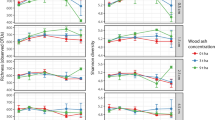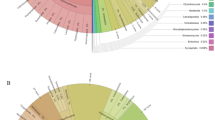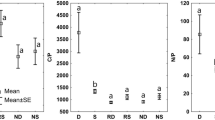Abstract
THE industrial ash which is a serious agricultural problem in developed countries is an even greater danger to forest stands. This is because the deposited layer is incorporated into the mineral soil in agricultural land, whereas in forests near industrial enterprises it is constantly increasing.
This is a preview of subscription content, access via your institution
Access options
Subscribe to this journal
Receive 51 print issues and online access
$199.00 per year
only $3.90 per issue
Buy this article
- Purchase on Springer Link
- Instant access to full article PDF
Prices may be subject to local taxes which are calculated during checkout
Similar content being viewed by others
References
Rees, N. J., and Sidrak, G. H., Nature, 176, 352 (1955).
Holliday, R., Townsend, W. N., and Hodgson, D., Nature, 176, 983 (1955).
Wilde, S. A., and Persidsky, D. J., Soil Sci. Soc. Amer. Proc., 20, 107 (1956).
Author information
Authors and Affiliations
Rights and permissions
About this article
Cite this article
SOBOTKA, A., MATERNA, J. Forest Seedlings and Mycorrhiza Development on Fly Ash. Nature 183, 1066–1067 (1959). https://doi.org/10.1038/1831066a0
Issue Date:
DOI: https://doi.org/10.1038/1831066a0
Comments
By submitting a comment you agree to abide by our Terms and Community Guidelines. If you find something abusive or that does not comply with our terms or guidelines please flag it as inappropriate.



